How New York keeps its cool: A history of ice skating in NYC
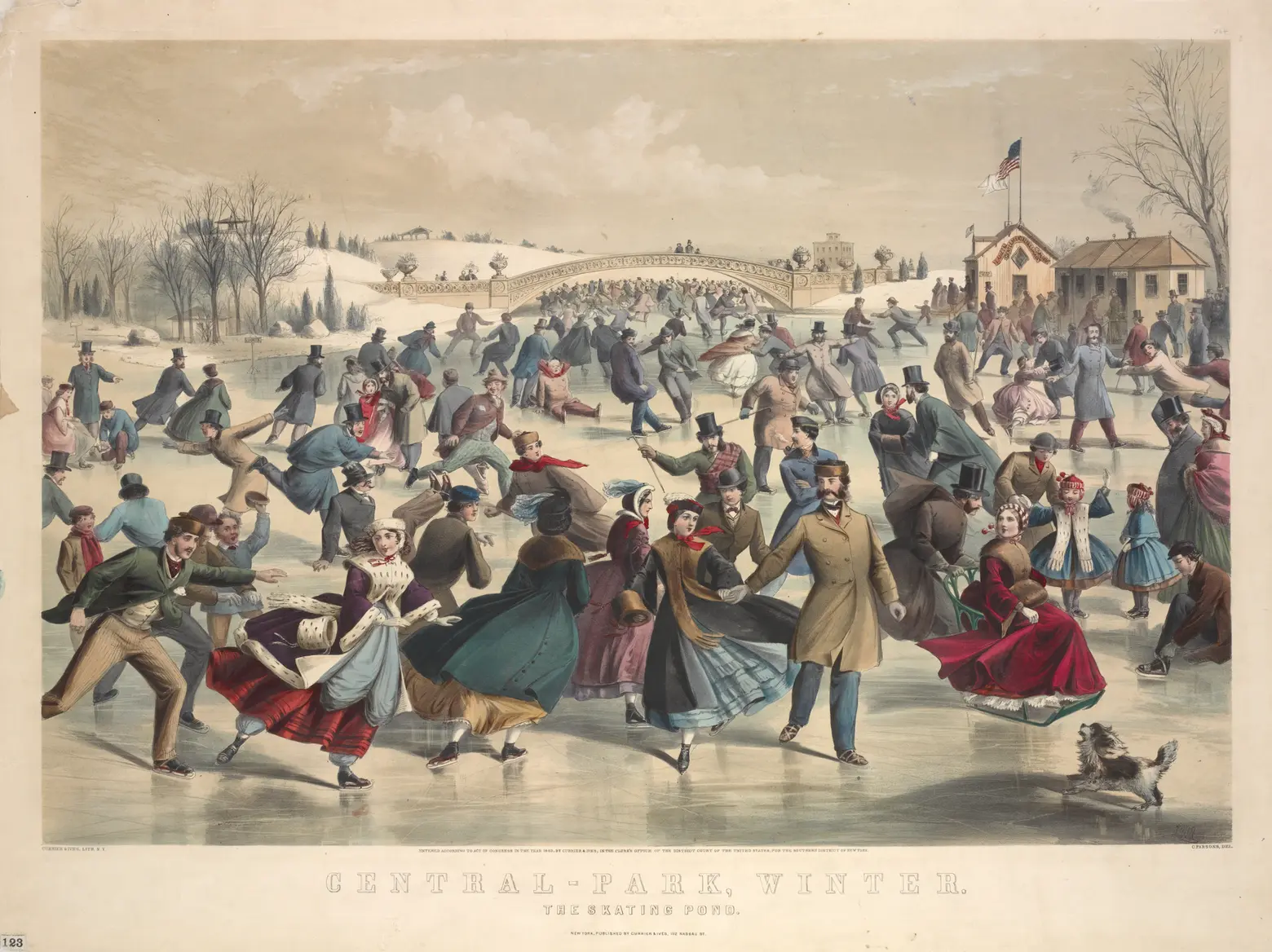
Central-Park Winter, 1862, via NYPL Digital Collections
While we haven’t had much snow yet this year, New York is already a winter wonderland thanks to the many ice skating rinks found across the city. If you choose to glide through the season on ice, taking a spin anywhere from Central Park to Coney Island, you’re sliding into a New York winter tradition that includes the nation’s first organized ice rink, a decade of “Icetravaganzas” that drew millions, a glittery trend of hotel ice gardens throughout Midtown, and even a relationship to the origins of baseball. So lace up, and read on for a history of ice-skating in New York City.
Dutch and English New Yorkers glided on the frozen ponds and streams of Lower Manhattan in the 17th and 18th centuries, but the history of organized ice skating in New York City (and the nation) begins in Central Park in 1858. That year, before the Park was entirely finished, The Lake welcomed skaters. In fact, ice skating was integral to Olmstead and Vaux’s vision for Central Park: On their Greensward Plan, the design that won them the commission to design Central Park, they labeled The Lake “The Skating Pond.” To make sure The Lake was the perfect site to skate, it was specially drained to the optimal level for freezing every year.
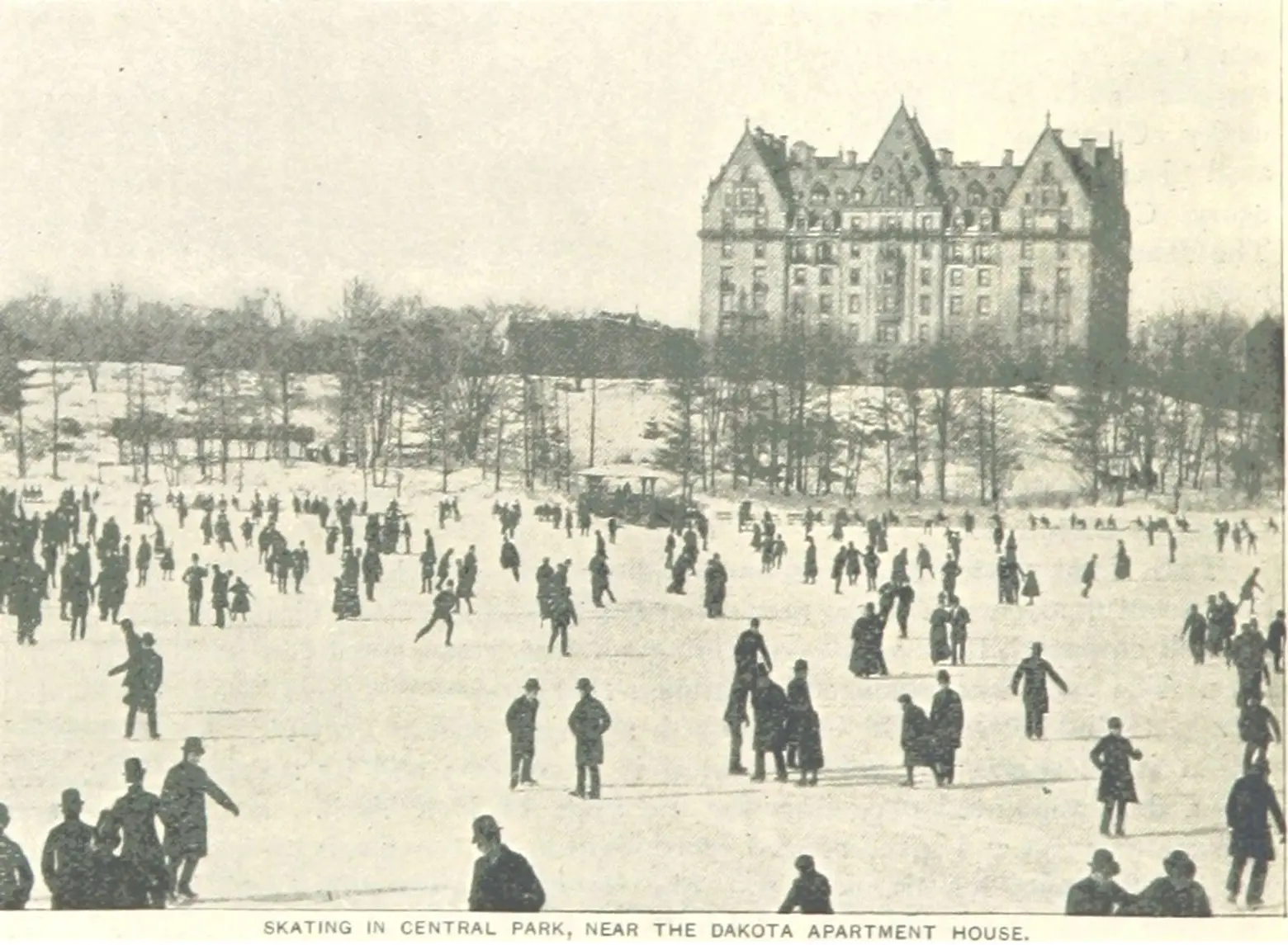 Skating in Central Park, 1893, via from the British Library/Mechanical Curator collection via Wikimedia Commons
Skating in Central Park, 1893, via from the British Library/Mechanical Curator collection via Wikimedia Commons
The Central Park Skating Pond inspired many other ponds throughout the five boroughs, like Mitchell’s Pond, just off Fifth Avenue at 58th Street, where the Plaza now stands. Mitchell’s Pond drew skaters as swank as the Plaza draws guests today. The pond became part of the New York Skating Club, a members-only group of gliders, in 1863.
But in most other circumstances, the ponds were for the people, and ice skating was considered one of the city’s most egalitarian forms of entertainment. It was one of the only situations in which rich and poor, men and women, found themselves on common ground (or common ice?), in mid-19th century New York.
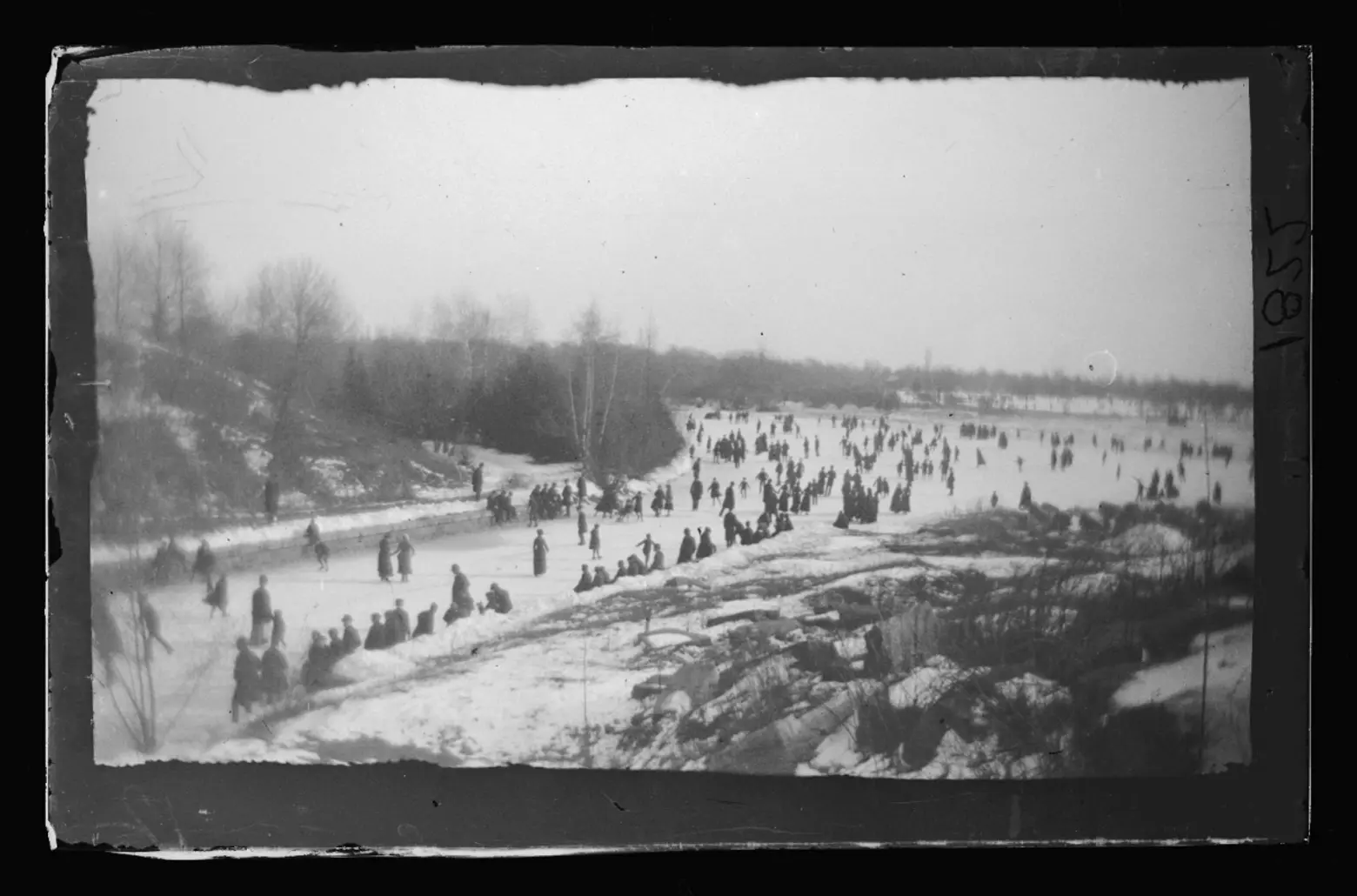
Skating in Prospect Park Brooklyn, January 31, 1885. Photo courtesy of Brooklyn Museum via Wikimedia Commons.
Since Civil War-era skating was a sport for the everyman, the city’s rinks drew giant crowds and were exceptionally large. For example, the Empire City Skating Rink, which opened at 63rd Street and Third Avenue in 1868, was 350 feet long, 170 feet wide, and welcomed more than 3,000 people on its first day.
Clearly, more people wanted to skate than Manhattan facilities could handle, so mid-19th century New Yorkers regularly made the trip by ferry to the completely separate city of Brooklyn to partake of its renowned skating ponds (That is, of course, if the East River itself didn’t freeze. In that case, many intrepid New Yorkers set out for a twirl on the river.).
Skating meant so much to 19th-century Brooklynites that Brooklyn’s streetcar system took to “raising the red ball” on each of their locomotives to indicate favorable skating conditions.
And there were so many places in Brooklyn to skate. On Christmas Day, 1864, the New York Times listed some of the best skating spots in Brooklyn, touting the Capitoline Skating Lake at Fulton and Nostrand, the Washington Pond at Fifth Avenue and 6th Street (overlooking the Cortelyou House, where George Washington stayed during the Battle of Long Island), the Nassau Pond in Flatbush, and Chichester’s Pond on Bushwick Avenue.
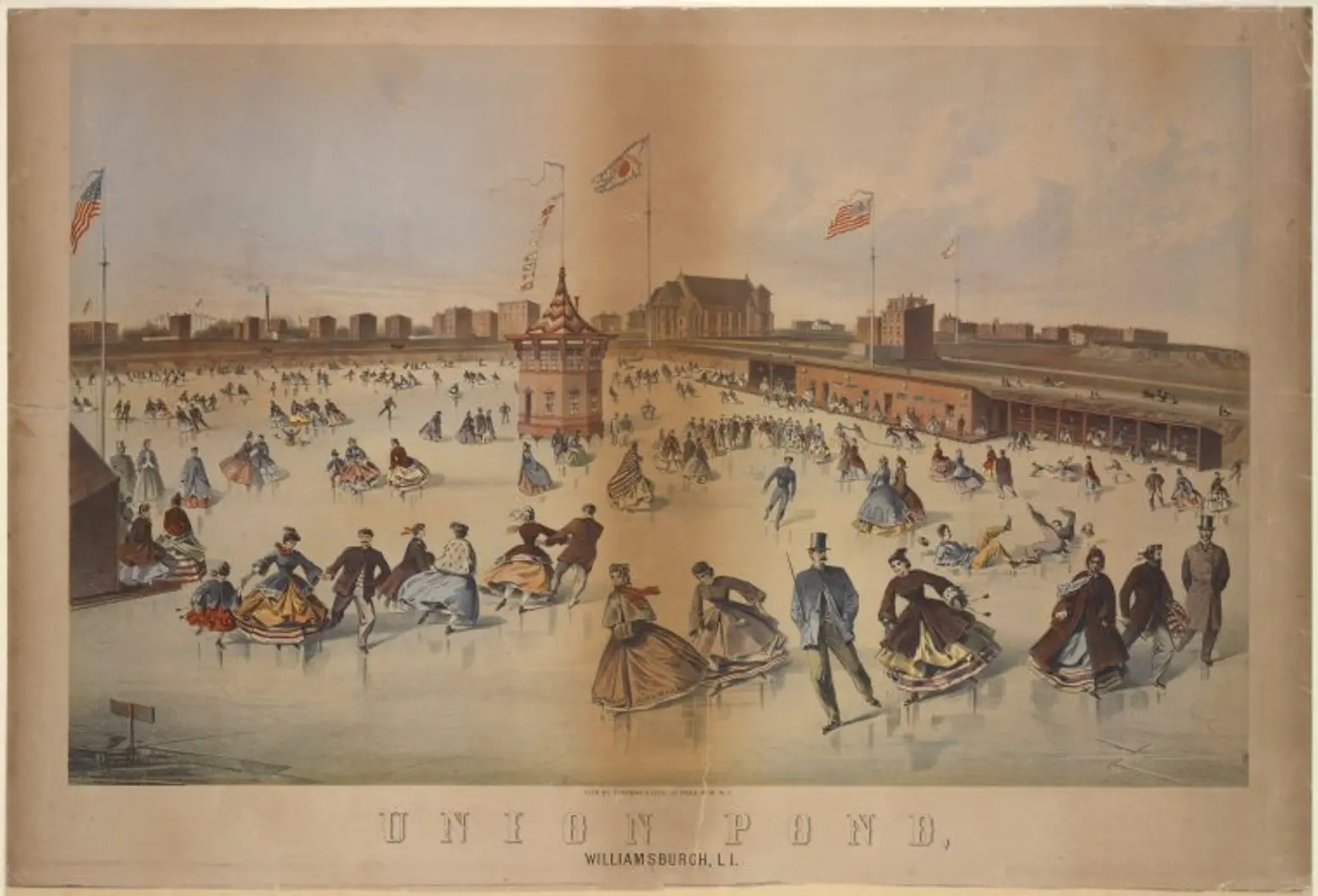
The Miriam and Ira D. Wallach Division of Art, Prints and Photographs: Print Collection, The New York Public Library. (1863). Union Pond, Williamsburgh, L.I.
Those ponds were well and good, but the crown jewel of Brooklyn skating ponds was the “world-renowned” Union Pond, the first skating pond in Williamsburg, which opened in 1861 and was considered to be “a model skating pond.” At Union Pond, located at Marcy Avenue and Lynch Street, skaters could swirl to the stylings of a live band every afternoon and evening, aided when the sun went down by a state-of-the-art lighting system.
If those lights weren’t enough, there were also “frequent displays of pyrotechnics throughout the season.” To add to the sensation, the grounds included a pagoda, and the pond was cleaned by horsepower, courtesy of several horses who lived in a stable on-site. During the spring and summer months, Union Pond transformed into Union Grounds, the nation’s first enclosed baseball field, and charged spectators a 10-cent fee to watch. Union remained a year-round sports facility, offering skating in the winter and baseball in the summer, until 1883 when the site was plowed over and replaced by the 17th Corps Artillery Armory.
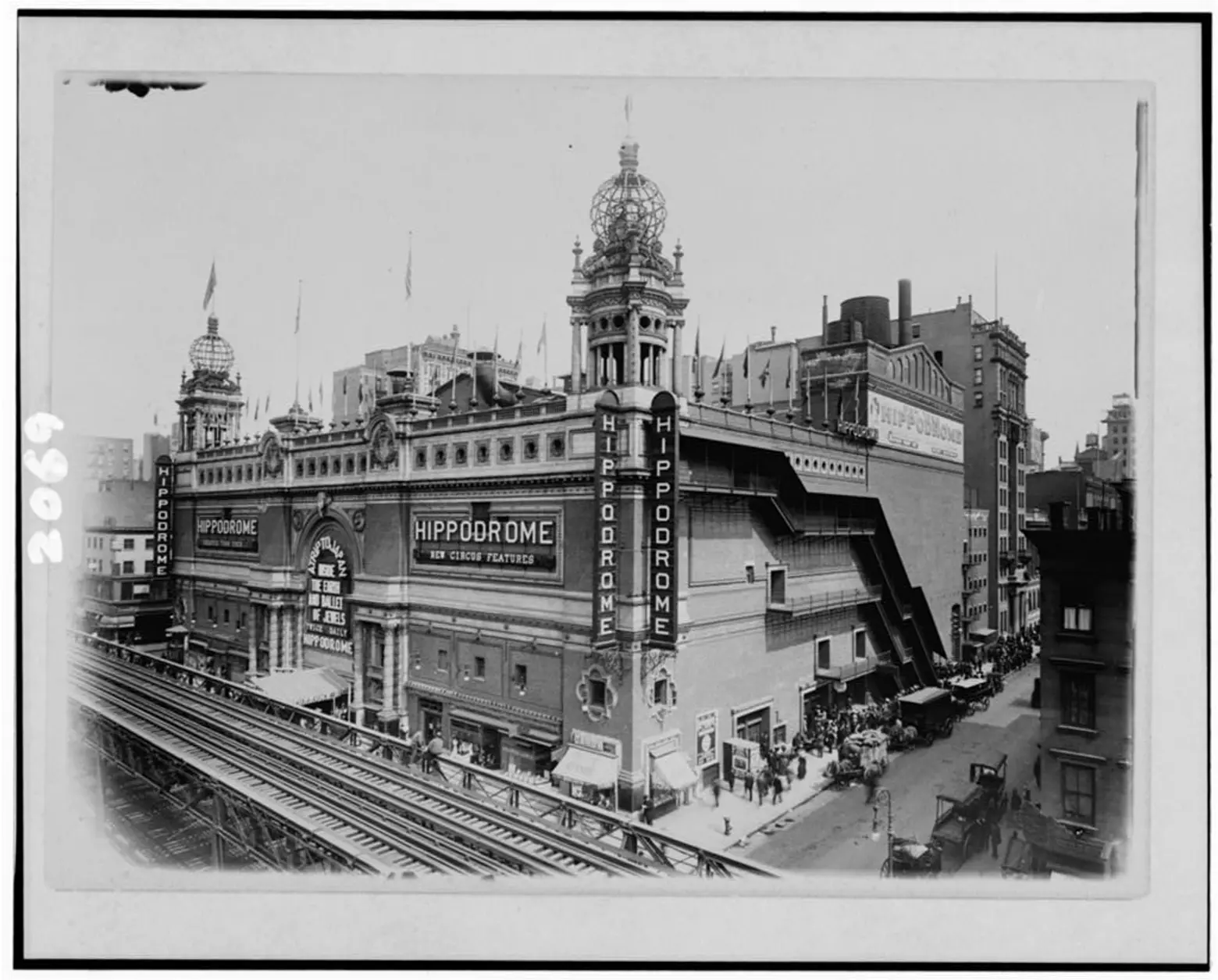
Tucker, F. H, photographer. The Hippodrome, New York, N.Y. / photo by F.H. Tucker, South Orange, N.J. Photograph. Retrieved from the Library of Congress.
By the 1890s, technological advances brought rinks indoors and made skating more of a spectacle than ever before. Suddenly, skating was part of the city’s opulent nightlife, and the finest hotels in New York offered “ice gardens” complete with terraces and clubhouses.
The early 20th century brought skating to the level of theater, as ice shows brought skating to the stage. In fact, skating gave “The Great White Way” a whole new meaning, when ice shows appeared on Broadway. In 1915, international ice show darling Charlotte Oelschlagel arrived in New York City from Germany. The 17-year-old ice queen had been performing on ice for audiences since she was 10. She was so famous, she was known simply as Charlotte. When her ice revue Hip Hip Horray! opened at the Hippodrome Theater on 6th Avenue and 43rd Street, it was so popular it ran 425 performances in just 300 days.
In the 1930s and 40s, just about any lot in New York could be a rink. The Parks Department flooded tennis courts, baseball fields, and other park grounds to create temporary rinks across New York City so that skaters could slide across Sara D. Roosevelt Park on the Lower East Side as easily as they could swirl through Central Park.
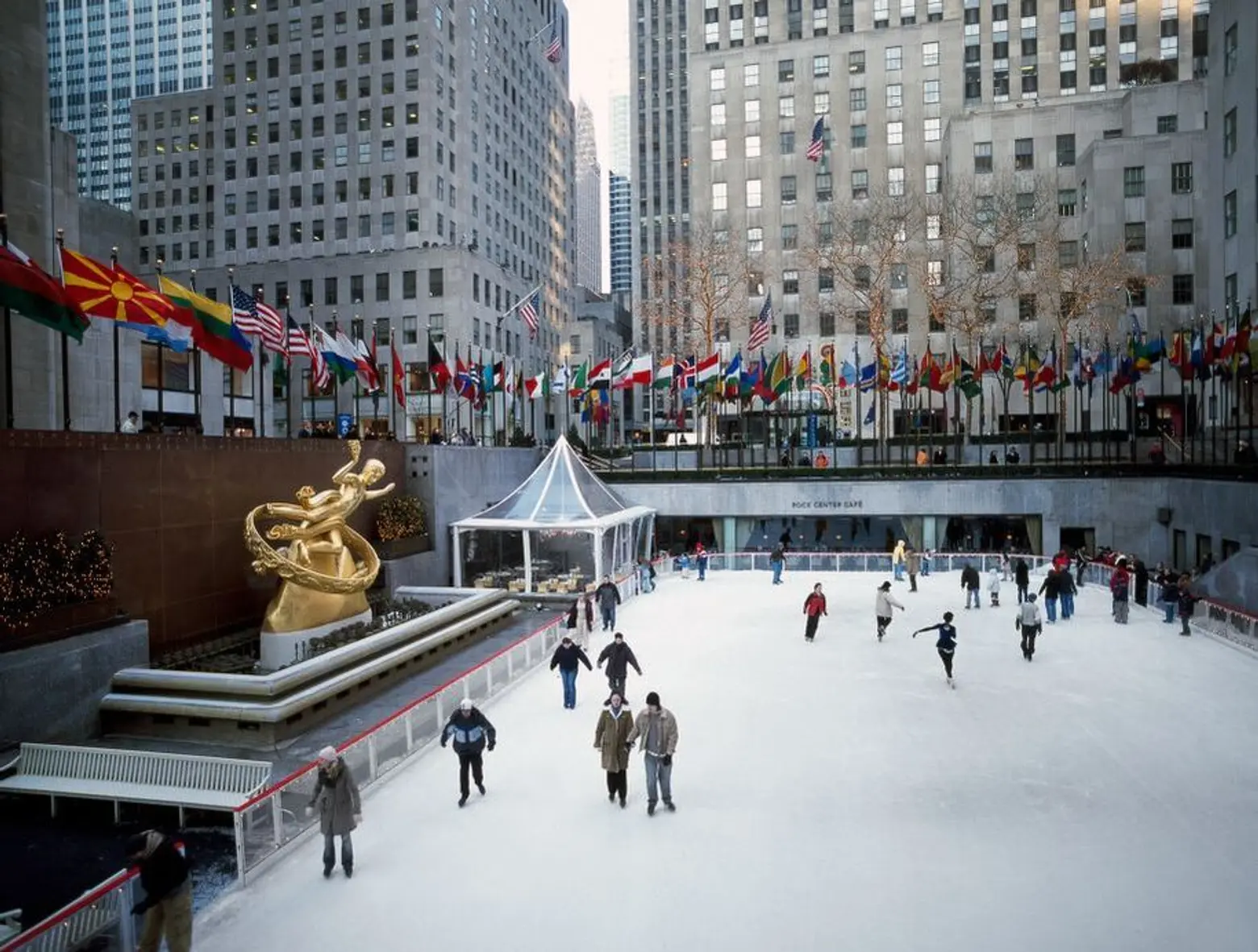
Highsmith, Carol M, photographer. Skating at Rockefeller Center, New York, New York. [Between 1980 and 2006] Photograph. Retrieved from the Library of Congress.
But a proliferation of flooded ball fields didn’t mean that the Depression dispensed with opulence on ice. In fact, Christmas Day 1936 saw the opening of the Rink at Rockefeller Center. By 1940, the Center Theater at Rockefeller Center debuted an “Icetraveganza” called It Happens on Ice including song, dance, and comedy performed on ice. The ice shows at Center Theater continued until 1950 and drew an estimated nine million people in 10 years.
The Icestravaganza may have seen its final curtain, but that didn’t mean interest in skating was on the wane. In fact, 1950 was a banner year for New York skating. That winter was the inaugural season of Wollman Rink in Central Park.
Wolman Rink was financed by philanthropist Kate Wollman, who lived at the Waldorf Astoria. Wollman hoped the rink would “bring happiness to the children that use it,” and she was known to personally present awards to the children who skated in the rink’s annual children’s competition.
In the 1960s, Wollman also funded Central Park’s Lasker Rink and the skating rink in Prospect Park. By the end of that decade, the Sky Rink was open a Chelsea Piers. In 1970, the Abe Stark Rink opened at Coney Island.
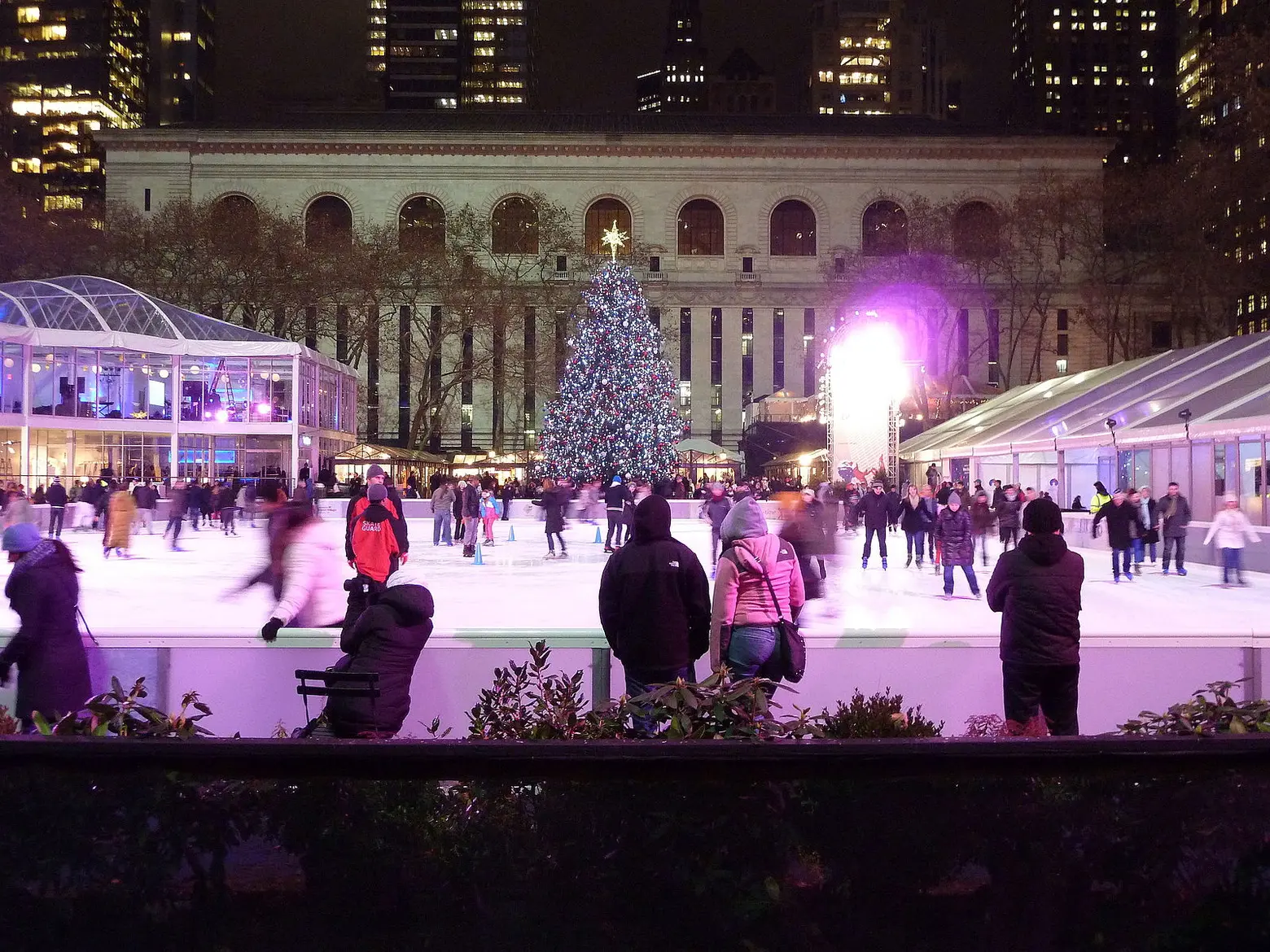
Skating in Bryant Park, 2013, by Rob Young via Wikimedia commons
New rinks are still springing up across the city. The Rink at Bryant Park opened in 2005. The World Ice Arena, an NHL-standard rink at Flushing Meadows, slid on the scene in 2009. New Yorkers today have many options for skating in the city, including rinks at Industry City, Prospect Park’s LeFrak Center, Brookfield Place, Manhattan West, and more.
Editor’s note: The original version of this story was published on November 21, 2019, and has been updated.
RELATED:
- The Urban Lens: The Museum of the City of New York looks back at NYC ice skating over the centuries
- In 19th century NYC, sleigh carnivals took over parks on snowy days
- Winters during 19th century New York were so cold, the East River froze over
+++
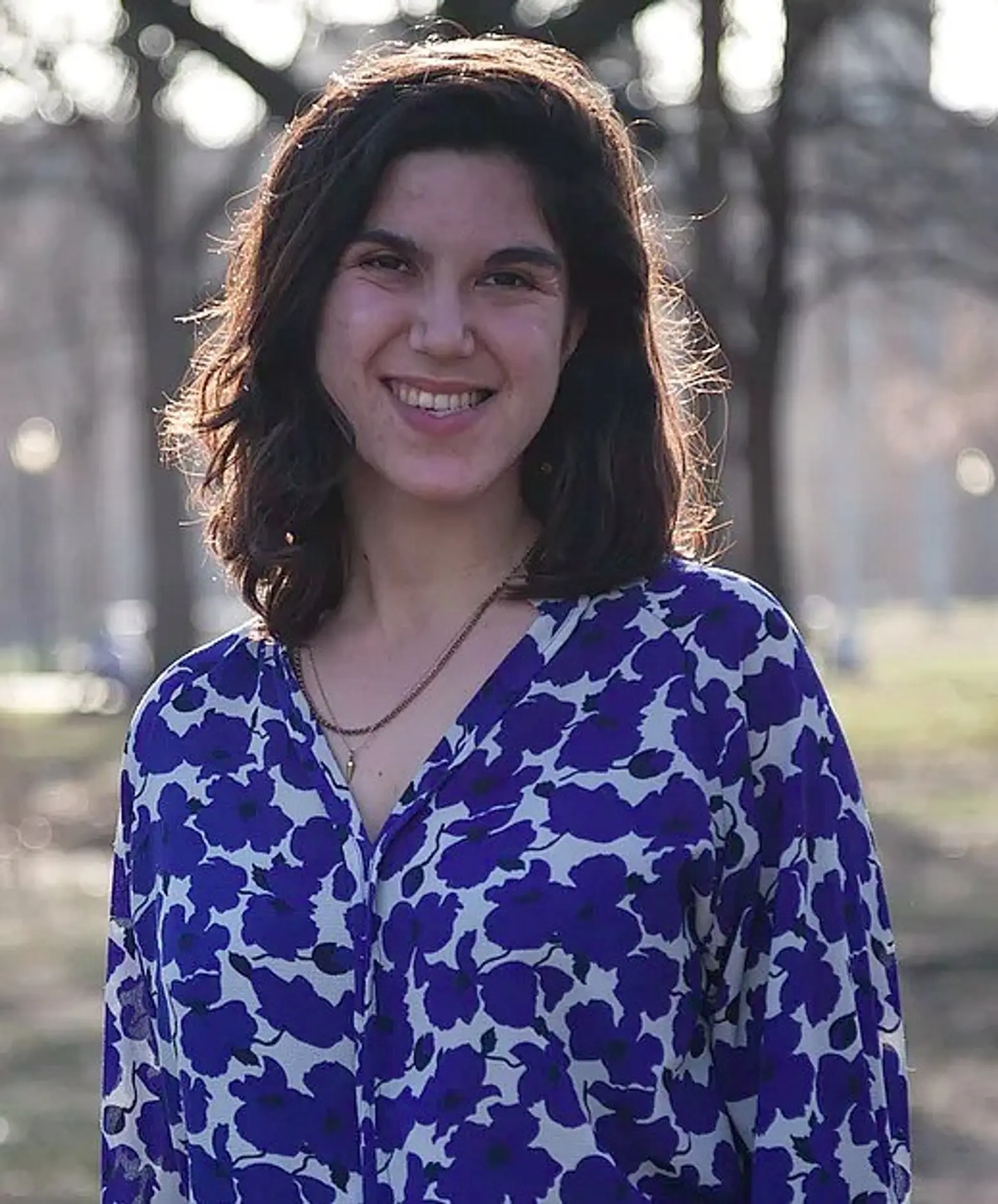 Lucie Levine is the founder of Archive on Parade, a local tour and event company that aims to take New York’s fascinating history out of the archives and into the streets. She’s a Native New Yorker, and licensed New York City tour guide, with a passion for the city’s social, political and cultural history. She has collaborated with local partners including the New York Public Library, The 92nd Street Y, The Brooklyn Brainery, The Society for the Advancement of Social Studies and Nerd Nite to offer exciting tours, lectures and community events all over town. Follow her on Twitter and Instagram.
Lucie Levine is the founder of Archive on Parade, a local tour and event company that aims to take New York’s fascinating history out of the archives and into the streets. She’s a Native New Yorker, and licensed New York City tour guide, with a passion for the city’s social, political and cultural history. She has collaborated with local partners including the New York Public Library, The 92nd Street Y, The Brooklyn Brainery, The Society for the Advancement of Social Studies and Nerd Nite to offer exciting tours, lectures and community events all over town. Follow her on Twitter and Instagram.
Get Insider Updates with Our Newsletter!
Leave a reply
Your email address will not be published.
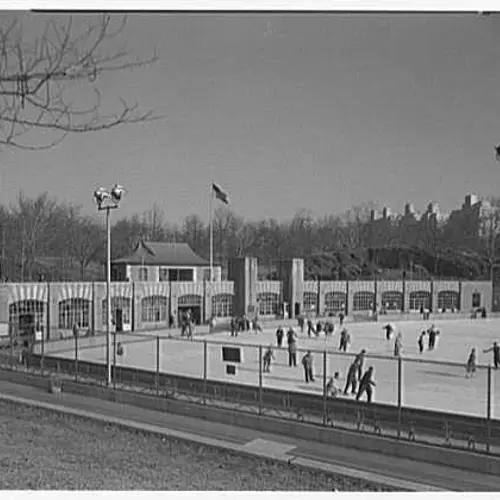
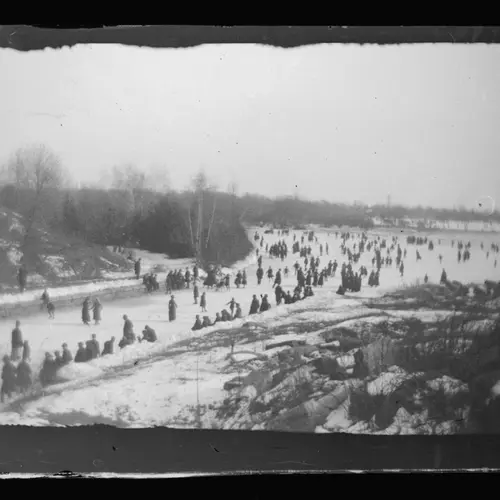
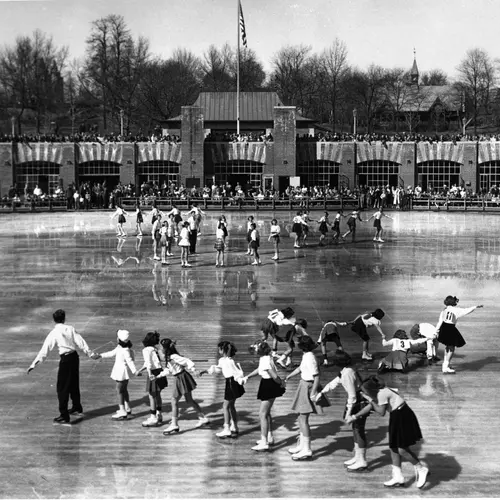
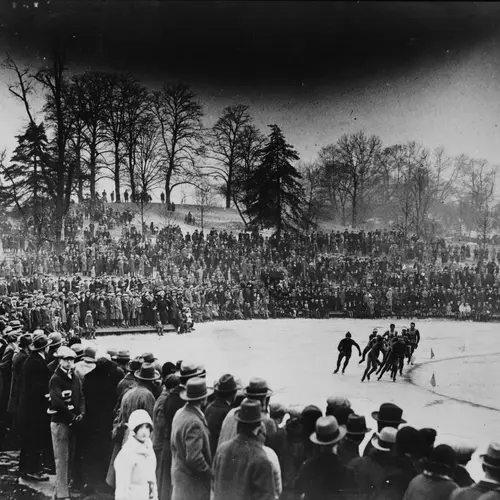
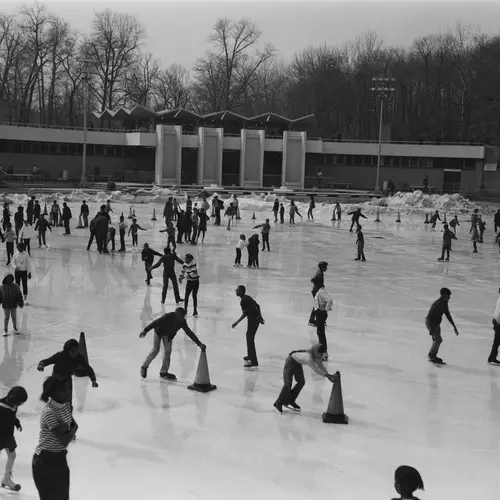
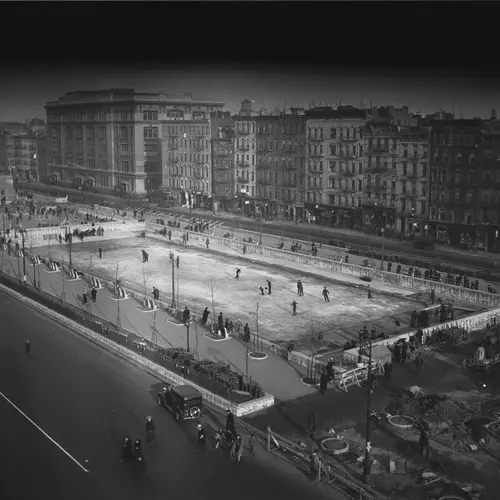
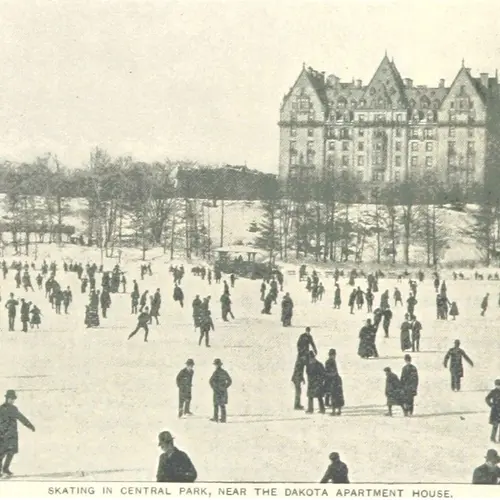
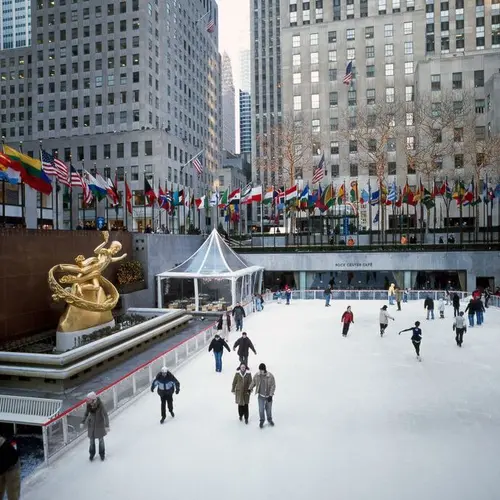
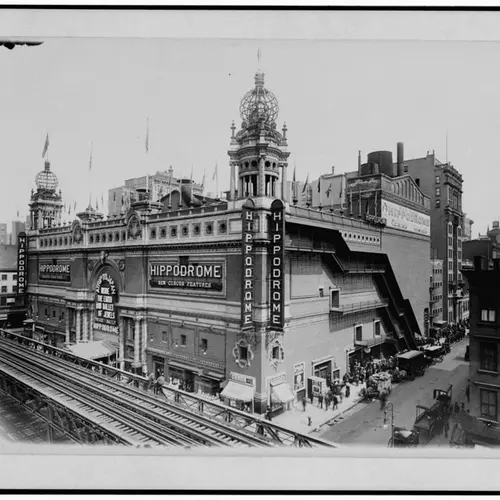
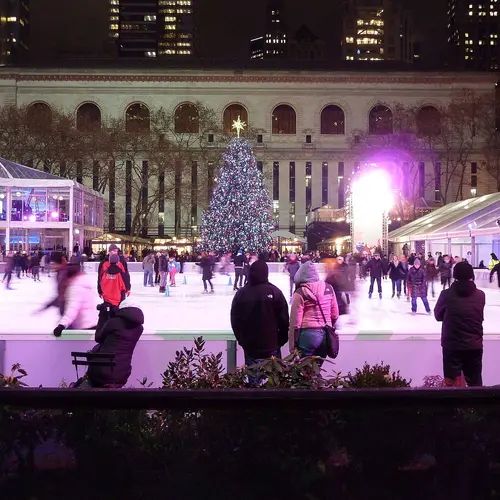
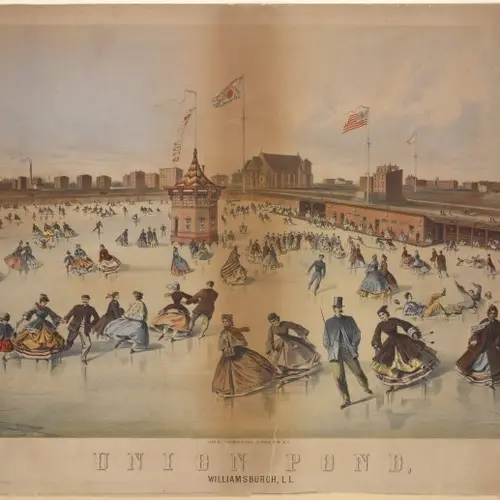
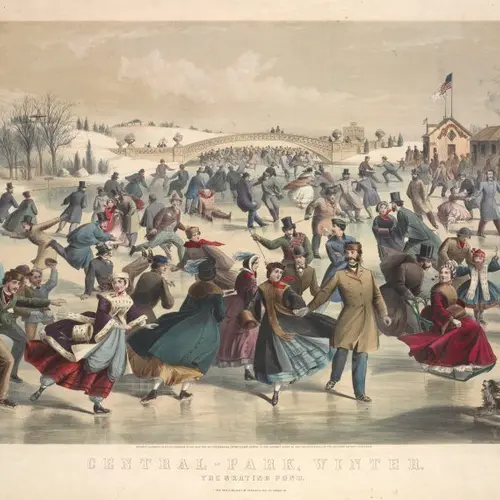
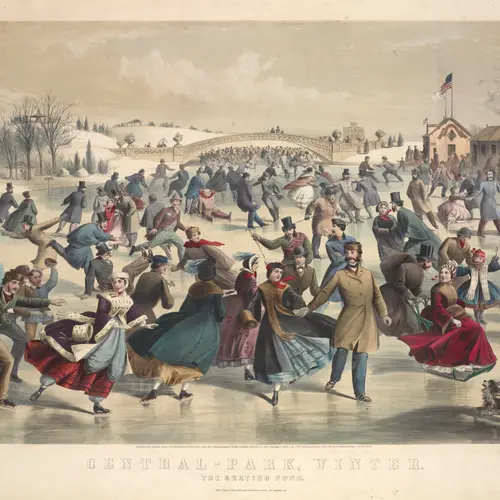












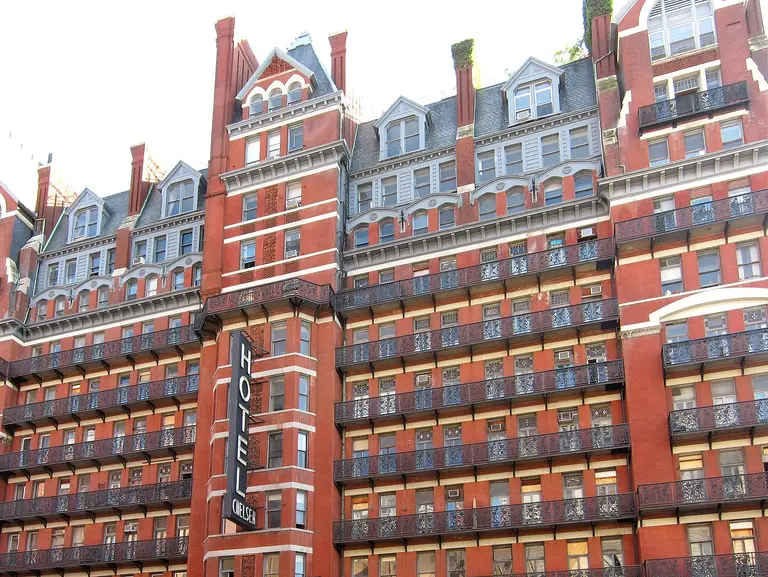
















There was also an indoor ice skating rink on the upper west side. Or the west side I know because I use to take lessons there. I remembered the building. It was on the top floor. The outside building had a slant with large windows. I believe it was the sky rink back in the 1960’s and 1970’s. I was a Native New Yorker originally from Manhattan.